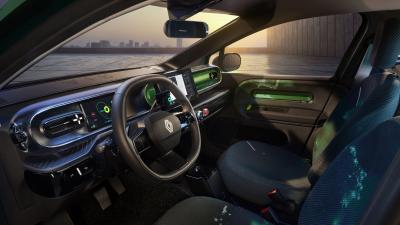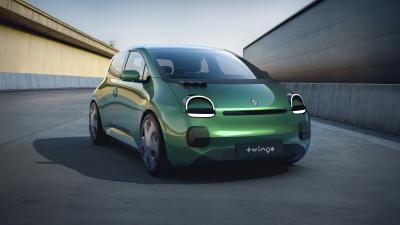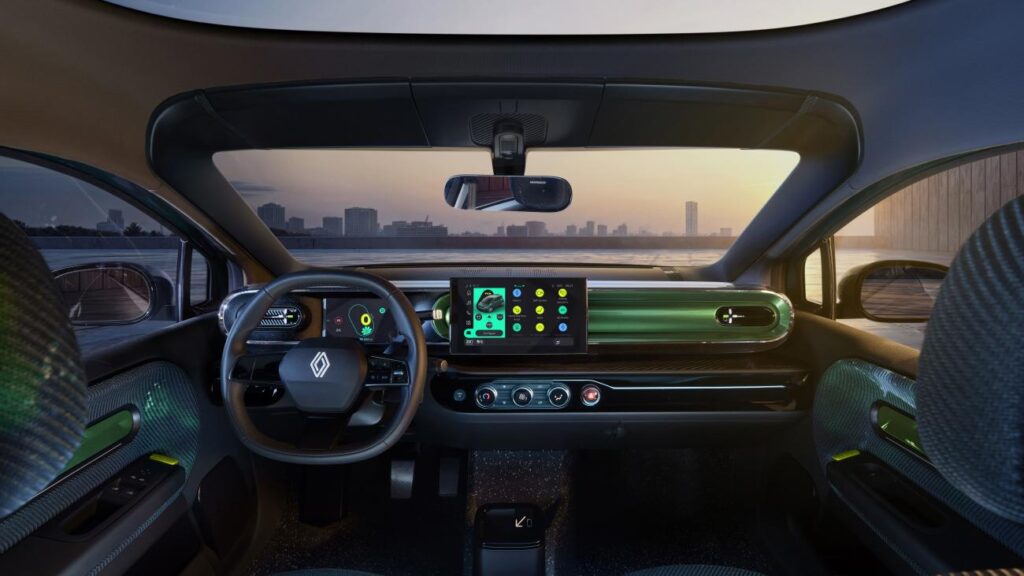Renault has been on a roll lately with reviving some of its beloved models as retro-styled EVs. We’ve seen the 5 and 4 in production guise, but it’s the return of the Renault Twingo that’s arguably got us most excited.
Renault’s chosen the Brussels Motor Show to display a working prototype that it says is around 90 per cent representative of the final production car we’re due to see by the end of the year, and as such, we’ve got our first glimpse at the interior.
Renault Twingo prototype – interior
Naturally, everything’s digital, with a 7-inch instrument screen and 10.1-inch infotainment display. At the risk of sounding like grumpy old farts, though, we can’t heap enough praise on Renault for including proper knobs for the air-con and heating controls.
A big glass roof sheds lots of natural light on things, and it wouldn’t be a ’90s-inspired car without some jazzy upholstery patterns, an area where the prototype delivers a wave pattern on the seats and door inserts.

Renault Twingo prototype – interior
Other fun details include magnetic sections on the back of the front headrests, intended for rear passengers to stick a phone to, and adjustment dials for the seat backs that look like skateboard wheels because, y’know, urban. The rear bench slides back and forth and folds flat in two 50/50 sections, none of which is a given on a little city car like this.
Because this is a near-final prototype, a few exterior details have been revised and toned down from the original concept with an eye on production. There’s now an air intake concealed in the front bumper, the rear arches aren’t quite as flared, the illuminated surrounds for the front door handles have been ditched, and the black sections of the bumpers now feature a 3D-printed honeycomb pattern.

Renault Twingo prototype – front
The finished car will share a platform with the new 5 and 4 and is set to go on sale in 2026 with a starting price of under €20,000 (around £16,750) – although like the bug-eyed original Twingo that serves as the inspiration, the UK might end up missing out on it. We sincerely hope Renault finds a way of bringing it across the Channel.
Read the full article here


